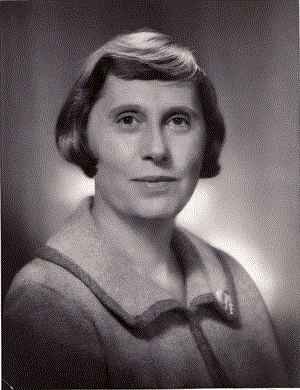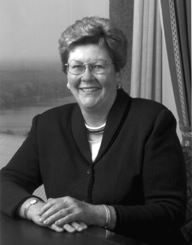 |
Imagine that your first job out of college was working for one of the most beloved and revered political figures in your state. That is what happened to me! Newly married, I moved to West Hartford, Connecticut. Several weeks after our arrival, the phone rang and it was Ella Grasso, the Secretary of the State, calling me to ask me to come to her office to discuss a possible job working for her. She had gotten my name from calling the career office at Mount Holyoke College (her alma mater and mine) seeking a newly graduated political science major who lived in the Hartford area. I fit the bill, and within a week I was employed as a research assistant in her office at the state capital.
Ella Grasso, an awe-inspiring person, was born to James and Maria Tambussi of Windsor Locks, CT., on May 10, 1919. Her parents were Italian immigrants who provided her with a modest, but comfortable, upbringing. As the recipient of various scholarships, Grasso enjoyed the finest of educational opportunities. She graduated from the Chaffee School in her hometown and was elected to Phi Beta Kappa at Mount Holyoke College where she graduated with a B.A. in 1940 and received her M.A. two years later. During the Second World War Grasso worked as a researcher for the War Manpower Commission and first became involved in politics as a member of the League of Women Voters.
As a veteran of local campaign organizations and as a protege of Connecticut's legendary Democratic leader, John Bailey, Grasso entered electoral politics in 1952 when she won a seat in the state House of Representatives. In her second term she became assistant Democratic leader of the state legislature. Then as Secretary of the State from l958 to 1970, Grasso became one of the best-known and most popular political figures in the state through her personal attention to citizens' concerns and her public ceremonial duties. At the same time she continued to be active in Democratic party affairs, and at the l968 Democratic National Convention in Chicago, she proposed a platform plank condemning the United States involvement in the Vietnam War.
In 1970, Grasso entered the race for the empty House seat from Connecticut's Sixth District. In her campaign she again called for withdrawal of American troops from Vietnam and concentrated on the economic needs of her district where unemployment was a chronic problem. After a close victory, Grasso served as a member of the Committee on Education and Labor and the Committee on Veterans' Affairs where she sponsored a variety of legislation designed to increase employment and protect workers. One of the most important accomplishments of her two terms was her part in drafting the Comprehensive Employment and Training Act. The work in Washington, however, never engaged Grasso the way Connecticut politics had. Early in her second term, her name was mentioned as a possible candidate for Governor, and in January 1974 she announced her intention to run for that office. Grasso defeated her House colleague, Representative Robert Steele, to win the gubernatorial race and become the first woman in the nation to be elected Governor "in her own right."
Ella was committed to public service. She called political leadership "the noblest profession", and she encouraged others, particularly women, to seek careers in public office. To quote one of her staff members when she was Governor--"Her capacity to inspire others came in large part from her ability to articulate her dreams and thoughts openly and plainly. She was able to influence people by the noble expressions of her brilliant mind. That, combined with her folksy, plain-spoken campaign style, reminded people that this was a woman deeply rooted in her small hometown where she learned the meaning of “neighbor, personal responsibility to state and country, and the wisdom of proper respect for the opinions of others." Ella's personal values, her career successes, and her political leadership made her a hero to many, including me!
Editors note: Tragically, Ella Grasso was forced to resign from office due to terminal ovarian cancer on December 31st, 1980, and died 5 weeks later on February 5th 1981 at the age of 61. Among her many accolades, she was awarded the Presidential Metal of Freedom by President Ronald Reagan, posthumously, in 1981, and was inducted into the National Women’s Hall of Fame in 1993 as well as the Connecticut Women's Hall of Fame in 1994.
 |
About the author:
Career: Former Chairman, Fleet Bank, Ct.; Former President, Shawmut Bank, Ct.; Former Vice Chairman, Shawmut National Corporation. Personal: Married with two children, a daughter and a son, and two grandchildren. Civic: Active in numerous not-for-profit organizations serving women and children, the arts, education, the environment, and people in need.
Page created on 6/23/2012 12:00:00 AM
Last edited 6/23/2012 12:00:00 AM
